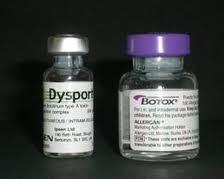
The quest to find a ‘topical Botox’ or cream that would penetrate through the skin to cause similar facial expression muscle weakness has been much like the search for the Holy Grail. There is a strong belief that such a compound exists but it has yet to be discovered. Despite the many marketing scams that have abounded by topical creams claiming to have a Botox-like effect, a topical application that really works has remained elusive.
At this year’s annual American Society of Plastic Surgeons meeting in Denver, a new botulinum toxin-based gel was presented that showed promise. Reporting results from a recent prospective double-blind clinical trial of nearly 100 patients, near 90% of those that had the active gel had observable reduction in crow’s feet wrinkles. This compared, interestingly, to just under 30% in those patients that have been treated by a non-active or placebo gel. In a second study that involved nearly 200 patients about 40% of those treated with the botulinum toxin gel had good results. In either study, the effects of the gel lasted around four months which was comparable to that of injectable Botox.
These study results are the first to show that dynamic facial wrinkle reduction is possible through topical application or a cream. It is no surprise that the studies have been done for wrinkles in the crow’s feet region to the side of the eye. This skin is very thin and the most easily penetrated down to the orbicularis muscle underneath. This is unlike the substantially thicker forehead tissues where an effective topical cream would be much more challenged.
While it is encouraging that a botulinum toxin gel has been shown to noticeably soften crow’s feet wrinkles without needles, it remains to be seen how practical it will be. Does the gel work better than injectable Botox? Would it’s cost be similar, less or even more? This information awaits further clinical study which undoubtably is ongoing.
Dr. Barry Eppley
Indianapolis, Indiana


